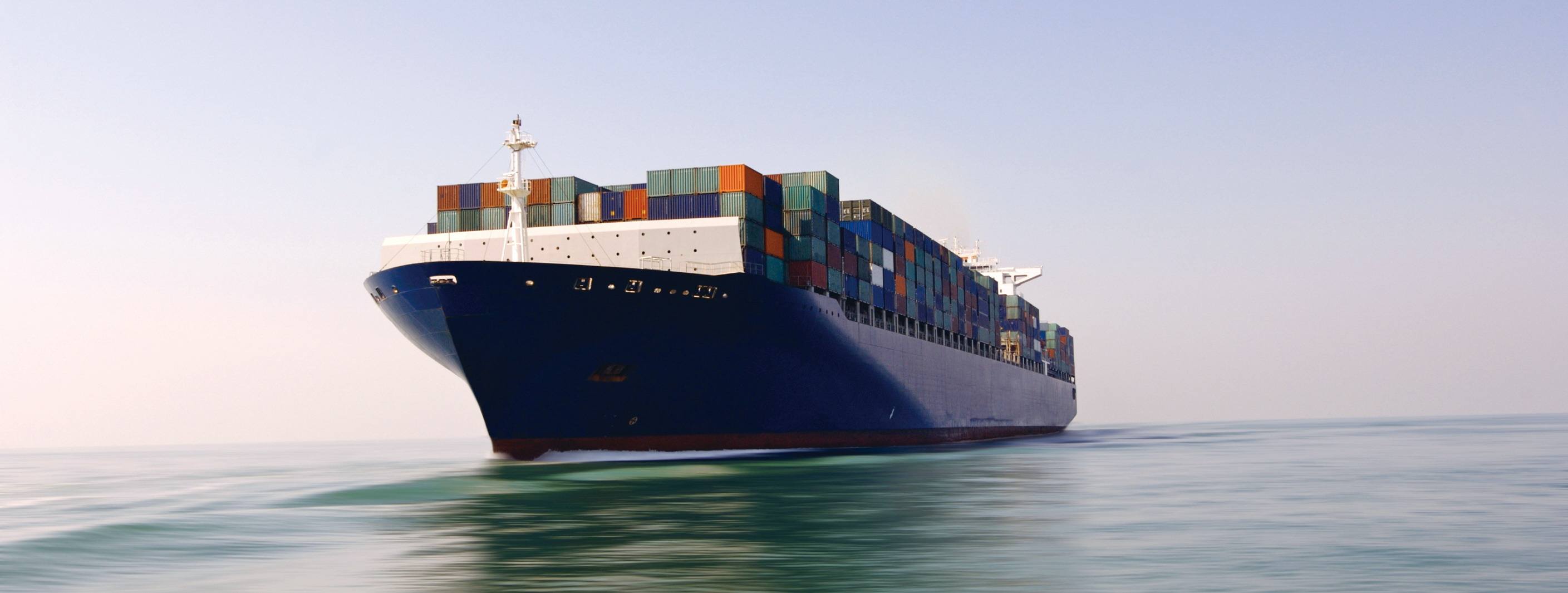Shipping industry next step how to go?

- Date: Nov 29, 2017
- Comments: no comments
- Categories: News
“The prospects for the recovery are not clear. The coalition has half the pros and cons, the pressure on environmental protection is getting bigger and the innovative technologies are more frequent. After a general labor-riddling pain in 2016, a series of new trends once again knocked on the door of the shipping industry and adjusted in depth At hand. ”
Unlike last year’s “complaint”, many people in the industry expressed their initial recovery point of view at the TPMA Asia held in Shenzhen in October this year. Generally speaking, the performance of major liner companies in the first half of the year was also good. Seems to confirm this point. But in the meantime, new trends and new changes are coming in one after another, testing the wisdom of the industry enterprises.
Trade and Market: The global shipping industry is optimistic about China’s opportunities
“Now it is safe to say that most shipping companies have made money since the beginning of this year and the industry recovery has a good foundation.” A number of industry insiders and industry experts expressed their unanimity. The data also more directly reflect this situation. The latest report from Durrës predicts that the operating profit of the container shipping industry in 2017 is expected to reach 6 billion U.S. dollars. The agency also said that in the first half of this year, the global container port handling capacity increased by nearly 6%, although it is expected to slow down in the second half, but the container port handling capacity will increase by 5.5% throughout the year.
Parash Jain, head of research for Asia Pacific transport at HSBC, believes that from the global economic performance of the past year, major economies such as China, Europe, the United States and Russia have shown signs of recovery. Among these, China’s economic trend remains the focus of global concern.
According to the World Economic Outlook released by the IMF in its latest issue, the global economic growth rates were 3.6% and 3.7% in 2017 and 2018 respectively, while the growth rates of China’s economy were 6.8% and 6.5% respectively, both of which are expected There are enhancements.
Xu Yating, an economic analyst at financial information service IHS Markit in China, also expressed similar views. She believes that China’s economic growth will stabilize at around 6.5% in the next few years. At present, China pursues high-quality economic growth rather than rapid growth .
Specifically, the impact of China’s steady economic growth on the shipping industry lies in the fact that in the past it was the exports of low-end products that sustain China’s economic and trade growth. With the supply-side structural reform and China’s “One Belt and One Road” initiative In-depth promotion, this factor is being transformed into the export demand for a large number of mechanical facilities and materials due to overseas investment in fixed assets such as ports and logistics parks.
In addition, Zhang page president of Shanghai Shipping Exchange also suggested that shipping companies should also turn their attention to the planning of Xiong’an New District. He believes that the transportation of equipment and materials for infrastructure construction will surely greatly boost the confidence of the global shipping industry during the implementation of this plan because at the moment of slowing down some manufacturing capacity in China, Rely on a large number of imports.
However, while watching the steady growth of economic trade and the recovery of the shipping industry, there are some potential risks to be wary of. For example, from now until the end of 2019, there will be 78 large vessels delivering more than 14,000 TEU. At the same time, lower financing costs have made it possible for more new ship orders. Zhang also brought a disturbing set of data on the relationship between economic growth and trade. He said: “Five years ago, the ratio of global economic growth to trade growth was 1: 2, that is, Said that for every 1% increase in the global economy, the volume of trade will increase by 2%, but this ratio is now 1: 0.8. “It can be said that if the wrong estimation of the trade volume growth situation will overshadow the prospect of recovery in the shipping industry shadow.
Consolidation and Alliance: Is it really a shipping necessity?
In 2017, as COSCO SHIPPING issued a tender offer to Orient Overseas International, another “marriage” of the shipping industry was added. Mergers and reorganizations among the top carriers have shifted from industry trends to realities and will continue.
Parash Jain analysis said that in the future there may be only two types of shipping companies, one is a small number of very large enterprises, the layout of the global market, the other is focused on personalized routes and regional “small and beautiful” type of enterprise. For some medium-sized liner companies, M & A and consolidation have brought new impetus.
According to Nicolas Sartini, the chief executive officer of the U.S. presidential ship acquired by CAC, the biggest significance of the integration is that it no longer considers the issue of scale, but instead focuses on how to build a reasonable shipping system so that revenues Become more reasonable, and how to improve service better. In the first half of this year, the U.S. presidential shipping contributed about 38% of net profit to CAC, helping CAC to become the world’s most profitable liner company in the first half of this year.
One of Japan’s three major shipping companies set up a new shipping company ONE, then the target locked in the scale of development. Its global chief executive, Jeremy Nixon, believes consolidation is necessary for the current industry, and the economies of scale it generates can not be ignored. According to Alphaliner October 18 this year, capacity data show that Japan’s three major liner companies combined capacity of more than 1.299 million TEU, ranking No. 6 Evergreen shipping.
At the same time, Jeremy Nixon also said that after Japan’s three major shipping companies had a competitive relationship in the field of container transportation, the new company will rebuild its business system to better suit the current market environment. He also disclosed that ONE Corporation has started the contract on April 18 this year to sign the relevant freight service agreement on behalf of the new company.
In addition to mergers and acquisitions outside, in April this year, with the Ocean Alliance and the Alliance’s official operation, also brought a new alliance pattern. For the transport industry, the coalition is another effective means to enhance the industry concentration. Up to now, the coalition members occupy 12 seats among the top 20 liner companies in global shipping capacity. Capacity share, the three major league share of total capacity accounted for more than 75%. As Parash Jain said, the Alliance is already a necessity in the transportation industry.
But the shipowners and other parts of the supply chain do not seem to think so. Alan Murphy, chief executive of SeaIntel Maritime Intelligence, described the current coalition as “a forced marriage.” In his view, for the owner, the alliance is not a good thing.
In fact, there have been shippers questioned the Union’s service and prospective class rates. Paolo Montrone, vice president of global trade at Texas Instruments, said that for carriers, the need for multiple carriers is a risk-sharing tool, however, the emergence of coalitions makes such options a lot less. John McCauley, Cargill vice president of logistics also expressed the same view, he believes that the Union has done a lot in maintaining unity, which seems to be an important way to enhance internal coordination, but personalized demand and differentiated services is the Union’s “pain point” . In addition, the Union for the stable schedule and quasi-class rate of questioning, but also lead to on-site attention. 95% of the prospective class is the expectations of shippers, and how to achieve, the affiliate may also need to do more work.
The gambling between liner companies and shippers has been going on all the time, but for the liner companies, the era driven by supply and demand is over and is now a service-driven era.
Environmental protection and new technology: cost test aircraft business wisdom
In addition to the urgent need to improve services, shipping companies currently face a severe test, that is, the increasingly stringent environmental protection policies.
“If shipping companies operate strictly in accordance with current environmental policies, the entire industry will pay over $ 60 billion more for that.” Yoo Chang Keun, president and chief executive officer of Hyundai Merchant, made a staggering figure.
In addition to the existing Ballast Water Convention, in 2016, according to the decision of the London convention of the International Maritime Organization, starting from 2020, the global upper limit for the sulfur content of marine fuels will be reduced from 3.5% to 0.5%. As the set date approaches, the shipping industry in the recovery phase faces the additional cost of environmental protection.
In the view of Yoo Chang Keun, the shipping companies have three responses to the new regulation on sulfur emissions. The first is the use of low-sulfur oil, which is what most shipping companies are currently using. However, from a cost point of view, the price of low-sulfur oil is higher, so most of the current liner companies use sub-periods and sub-regions. Second, the original ship to transform, install a marine scrubber for filtration and purification. After rebuilding, ship operators can still use heavy oil to filter through the equipment, but the equipment installation cost is very high, the price is between 5 million US dollars and 10 million US dollars, but also wait 10 months to install time. The third is to build LNG powered ships. At present, the ship is used more extensively in near-ocean routes and less in ocean. However, the disadvantage is that the construction cost of the LNG powered vessel is high, and there are also restrictions on the fueling locations. In addition, the spacecraft will sacrifice part of the space and will lose its carrying capacity.
Either way, Air China will pay more additional costs for this. Although Yoo Chang Keun did not disclose the possible strategies of Hyundai Merchant Marine, he showed great interest and attention to the new LNG powered ship. In addition, up to fly the recent 22000TEU super-large ship orders, but also consider the use of LNG power mode, which may be the future direction of the development of the industry.
Since additional costs and expenses can not be avoided, how to improve operational efficiency to a greater extent has become the focus of aeronautical firms’ thinking. The endless stream of new technologies to the shipping industry to provide more solutions. Such as IoT and blockchain technology, can greatly improve supply chain efficiency while establishing an automated solution that includes price management, shipping baselines, and freight bookings, saving both shipping companies and shippers costs, and Visible, so as to promote the participation of other sectors. However, Dexun related parties also warned that prior to the introduction of new technologies, Air China should make efforts to solve the problems such as lack of compatibility of the system, supervision of relevant departments, network security, privacy exposure and initial investment costs.
If the previous shipping industry was determined by the supply-demand relationship, the development of the shipping industry will be led more by new technologies now and in the future. How to develop new technologies and use new technologies will become the key to consider the wisdom of shipping companies.







No Comments Yet.